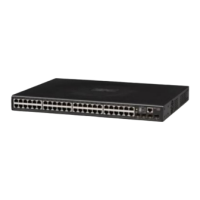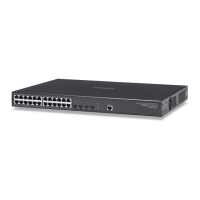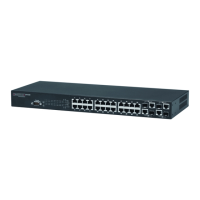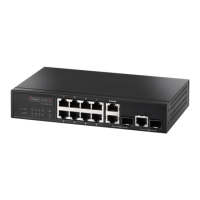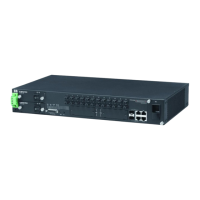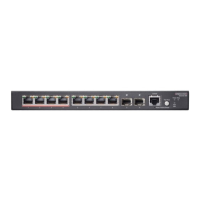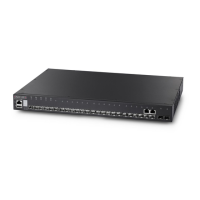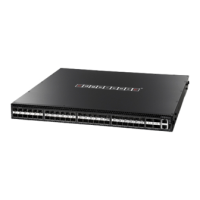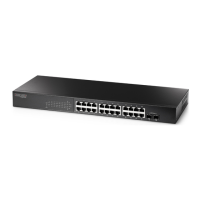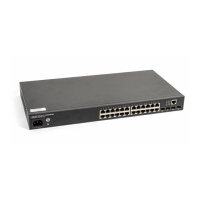Web Configuration
3-47
PoE
The switch can provide DC power to a wide range of connected devices, eliminating
the need for an additional power source and cutting down on the amount of cables
attached to each device. Once configured to supply power, an automatic detection
process is initialized by the switch that is authenticated by a PoE signature from the
connected device. Detection and authentication prevent damage to non-802.3af
compliant devices.
The switch’s power management enables individual port power to be controlled
within the switch power budget. Port power can be automatically turned on and off
for connected devices, and a per-port power priority can be set so that the switch
never exceeds its power budget. When a device is connected to a switch port, its
power requirements are detected by the switch before power is supplied. If the
power required by a device exceeds the power budget of the port or the whole
switch, power is not supplied.
Ports can be set to one of four power priority levels, critical, high, medium, or low.
To control the power supply within the switch’s budget, ports set at critical to medium
priority have power enabled in preference to those ports set at low priority. For
example, when a device is connected to a port set to critical priority, the switch
supplies the required power, if necessary by denying power to ports set for a lower
priority during bootup. If a device is connected to a switch port and the switch
detects that it requires more than the power budget of the port, no power is supplied
to the device (i.e., port power remains off).
If the power demand from devices connected to switch ports exceeds the power
budget set for the switch, the port power priority settings are used to control the
supplied power. For example:
• If a device is connected to a low-priority port and causes the switch to exceed its
budget, port power is not turned on.
• If a device is connected to a critical or high-priority port and would cause the switch
to exceed its power budget as determined during booting up, power is provided to
the port only if the switch can drop power to one or more lower-priority ports and
thereby remain within its overall budget.
• If a device is connected to a port after the switch has finished booting up and would
cause the switch to exceed its budget, power will not be provided to that port.
Note:
Power is dropped from low-priority ports in sequence starting from port number 1.
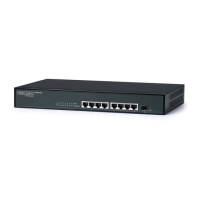
